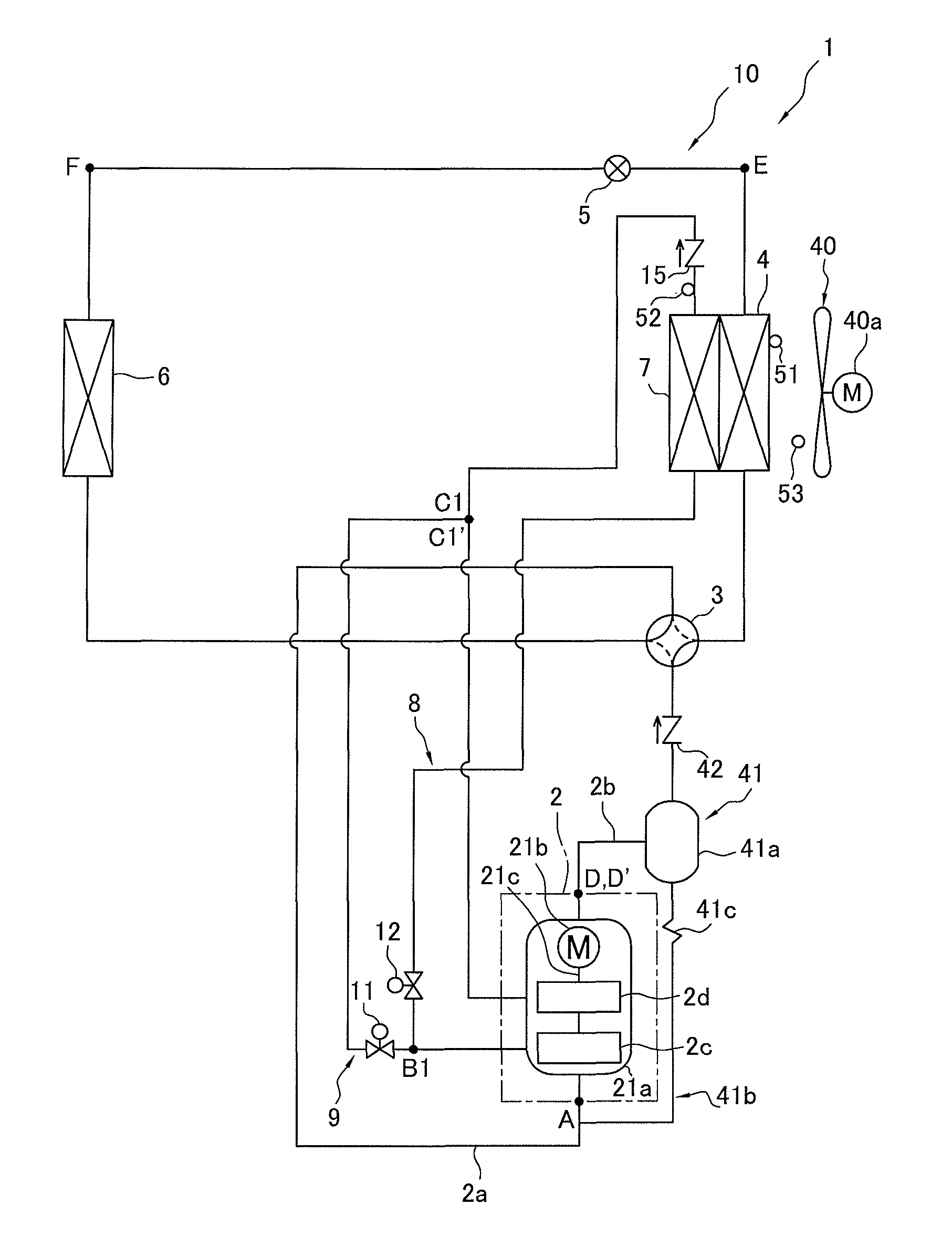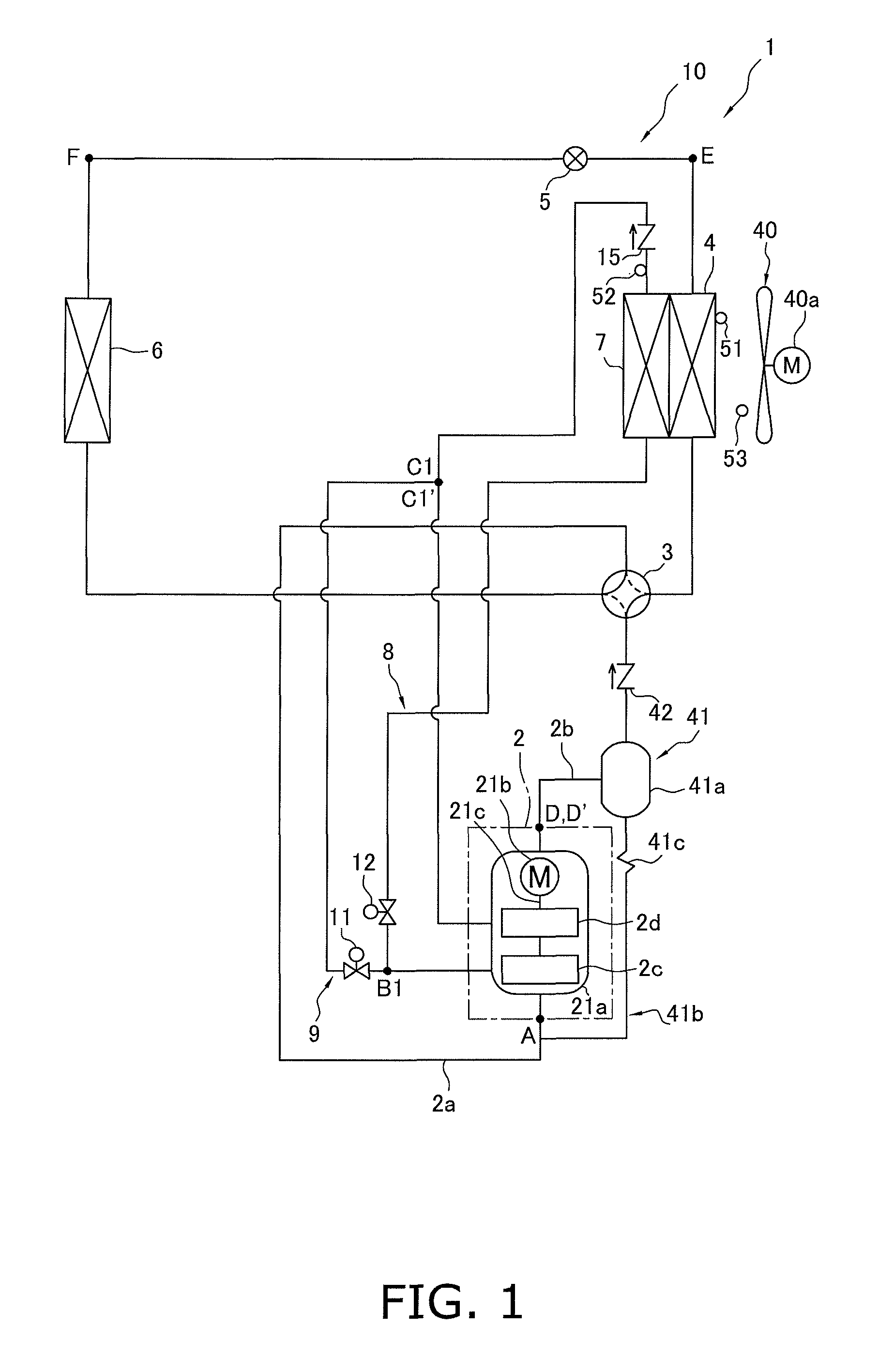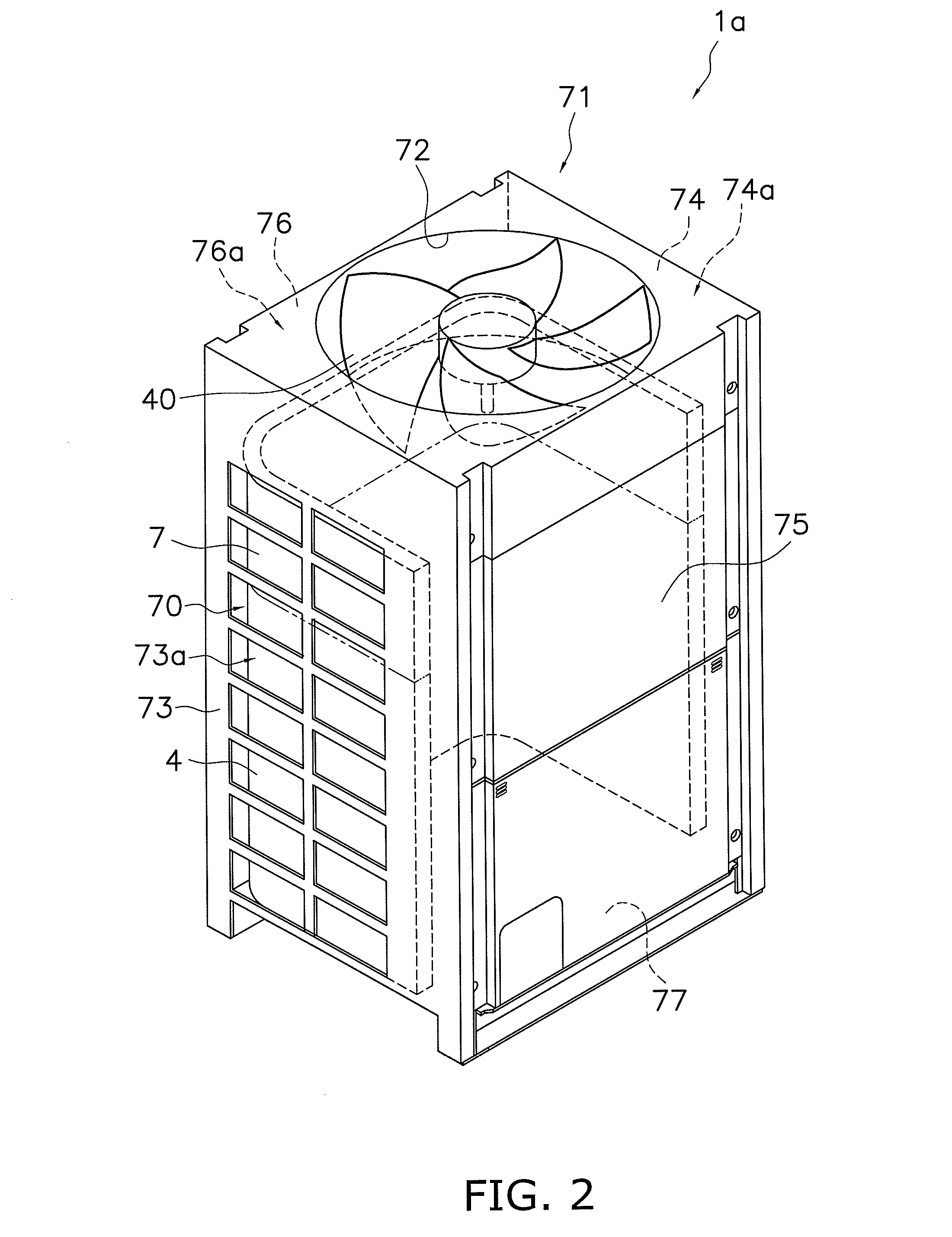Refrigeration apparatus
a technology of refrigerating apparatus and heat exchanger, which is applied in the direction of refrigeration equipment, refrigeration components, lighting and heating equipment, etc., can solve the problems of difficult to achieve high operating efficiency, large temperature difference between refrigerant and heat exchanger, and high heat radiation loss of heat exchanger, so as to improve the heat transfer coefficient in the flow rate of refrigerant through the low-temperature heat transfer channel can be increased, and the effect of less flow resistan
- Summary
- Abstract
- Description
- Claims
- Application Information
AI Technical Summary
Benefits of technology
Problems solved by technology
Method used
Image
Examples
modification 1
(3) Modification 1
[0100]In the above-described embodiment, a two-stage compression-type compression mechanism 2 is configured from the single compressor 21 having a single-shaft two-stage compression structure, wherein two compression elements 2c, 2d are provided and refrigerant discharged from the first-stage compression element is sequentially compressed in the second-stage compression element, but another possible option is to configure a compression mechanism 2 having a two-stage compression structure by connecting two compressors in series, each of which compressors having a single-stage compression structure in which one compression element is rotatably driven by one compressor drive motor, as shown in FIG. 13.
[0101]The compression mechanism 2 has a compressor 22 and a compressor 23. The compressor 22 has a hermetic structure in which a casing 22a houses a compressor drive motor 22b, a drive shaft 22c, and a compression element 2c. The compressor drive motor 22b is coupled wit...
modification 2
(4) Modification 2
[0103]In the above-described embodiment and the modification thereof, a two-stage-compression-type compression mechanism 2 was used in which two compression elements 2c, 2d were provided and a refrigerant discharged from the first-stage compression element was sequentially compressed by the second-stage compression element as shown in FIGS. 1, 10, and others, but another possible option is to use a three-stage-compression-type compression mechanism 102 in which three compression elements 102c, 102d, 102e are provided, and a refrigerant discharged from the first-stage compression element is sequentially compressed by the second-stage compression element, as shown in FIGS. 14 through 16.
[0104]First, the configuration of the air-conditioning apparatus 1 which performs a three-stage-compression-type refrigeration cycle shown in FIG. 14 will be described. As in the above-described embodiment and the modification thereof, the air-conditioning apparatus 1 herein has a ref...
modification 3
(5) Modification 3
[0134]In the above-described embodiment and the modifications thereof, the configuration has a single compression mechanism 102 and the multistage-compression-type compression mechanism 2 in which refrigerant is sequentially compressed by a plurality of compression elements as shown in FIGS. 1 and 13 through 16, but another possible option, in cases in which, for example, a large-capacity usage-side heat exchanger 6 is connected or a plurality of usage-side heat exchangers 6 is connected, is to use a parallel multistage-compression-type compression mechanism in which a multistage-compression-type compression mechanism 2 and a plurality of compression mechanisms 102 are connected in parallel.
[0135]For example, in the embodiment described above as shown in FIG. 21, the refrigerant circuit 210 can use a compression mechanism 202 configured having a parallel connection between a two-stage-compression-type first compression mechanism 203 having compression elements 203c...
PUM
 Login to View More
Login to View More Abstract
Description
Claims
Application Information
 Login to View More
Login to View More - R&D
- Intellectual Property
- Life Sciences
- Materials
- Tech Scout
- Unparalleled Data Quality
- Higher Quality Content
- 60% Fewer Hallucinations
Browse by: Latest US Patents, China's latest patents, Technical Efficacy Thesaurus, Application Domain, Technology Topic, Popular Technical Reports.
© 2025 PatSnap. All rights reserved.Legal|Privacy policy|Modern Slavery Act Transparency Statement|Sitemap|About US| Contact US: help@patsnap.com



